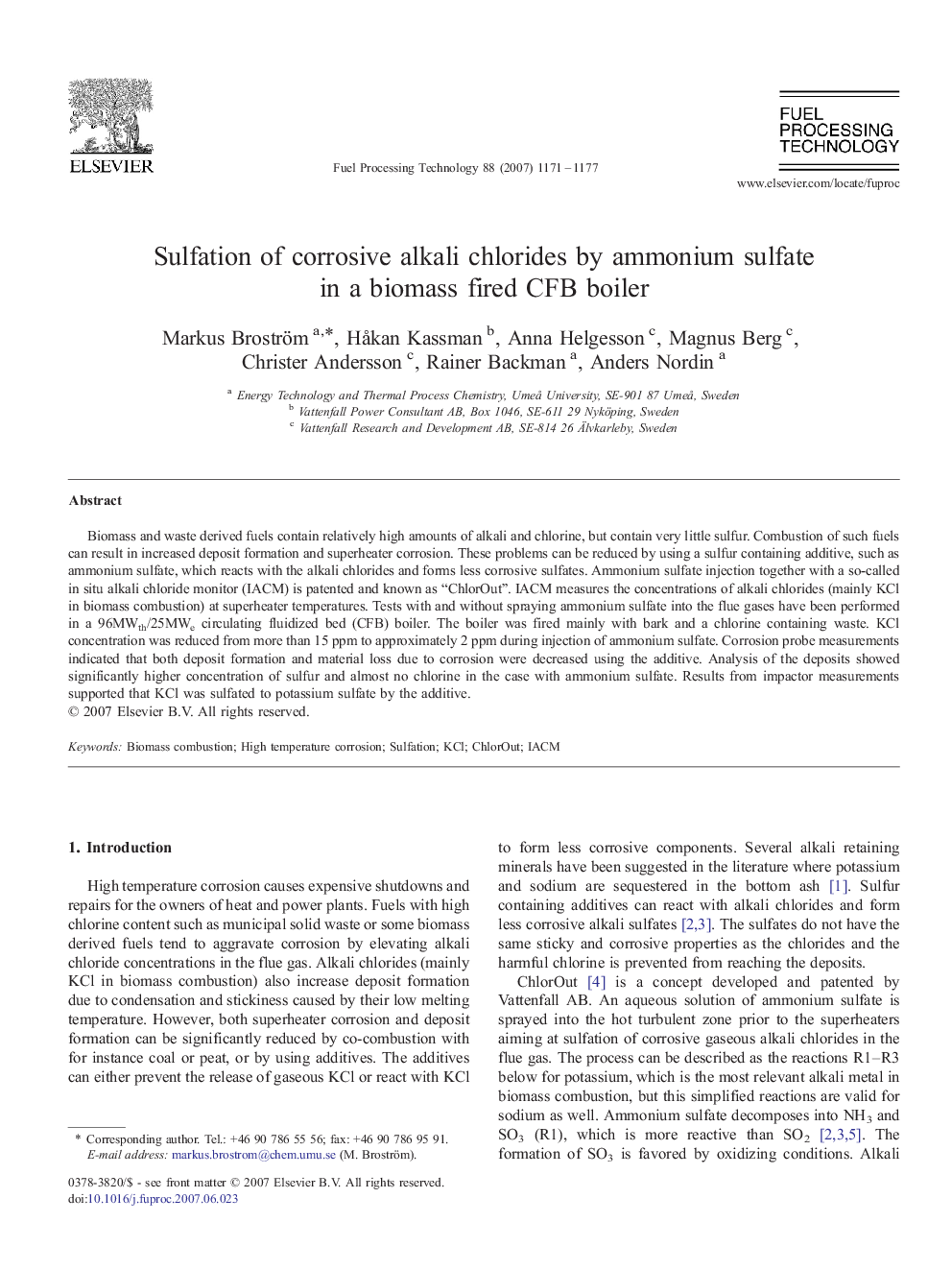| Article ID | Journal | Published Year | Pages | File Type |
|---|---|---|---|---|
| 211271 | Fuel Processing Technology | 2007 | 7 Pages |
Biomass and waste derived fuels contain relatively high amounts of alkali and chlorine, but contain very little sulfur. Combustion of such fuels can result in increased deposit formation and superheater corrosion. These problems can be reduced by using a sulfur containing additive, such as ammonium sulfate, which reacts with the alkali chlorides and forms less corrosive sulfates. Ammonium sulfate injection together with a so-called in situ alkali chloride monitor (IACM) is patented and known as “ChlorOut”. IACM measures the concentrations of alkali chlorides (mainly KCl in biomass combustion) at superheater temperatures. Tests with and without spraying ammonium sulfate into the flue gases have been performed in a 96MWth/25MWe circulating fluidized bed (CFB) boiler. The boiler was fired mainly with bark and a chlorine containing waste. KCl concentration was reduced from more than 15 ppm to approximately 2 ppm during injection of ammonium sulfate. Corrosion probe measurements indicated that both deposit formation and material loss due to corrosion were decreased using the additive. Analysis of the deposits showed significantly higher concentration of sulfur and almost no chlorine in the case with ammonium sulfate. Results from impactor measurements supported that KCl was sulfated to potassium sulfate by the additive.
